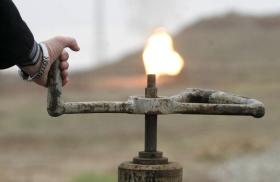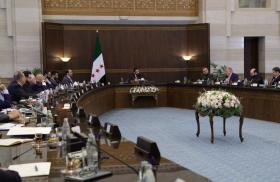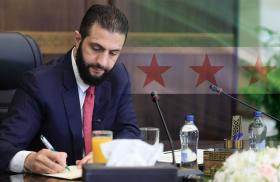
- Policy Analysis
- Articles & Op-Eds
The United States May Destroy the Fordow Enrichment Plant. It Won’t Make the Iranian Nuclear Threat Go Away.
Also published in Bulletin of the Atomic Scientists

The risk of nuclear breakout is probably greater today than before Israel’s military campaign, and simply taking out Fordow would not stop the regime from using suspected secret sites to produce nuclear weapons.
If the Israeli attack on Iran’s nuclear program, started on June 13, is to prove successful in preventing Iran from developing nuclear weapons, then a necessary—but not sufficient—step will involve the elimination of the Fordow Fuel Enrichment Plant. At the Fordow plant, located near the city of Qom, the Iranians have enough centrifuges (including IR-6s, their more advanced type) and uranium hexafluoride gas to produce several nuclear weapons. They could probably produce enough weapon-grade (90 percent) enriched uranium for one nuclear weapon within five to six days. Perhaps more important, Fordow itself is a hardened facility, built within a mountain and protected from many forms of attack. It could—in theory—continue to operate even after other nuclear facilities in the country have been destroyed, with its material then fueling nuclear weapons to be produced clandestinely.
If Israel decides to continue down the military path against Iran’s nuclear program, it has no choice but to ensure that the Fordow enrichment plant no longer poses a threat.
Diplomacy Dismantled
When President Barack Obama revealed the existence of this facility publicly in September 2009, he said that “the size and configuration of this facility is inconsistent with a peaceful program.” This was a factual description but somewhat of an understatement, seeing as Fordow was constructed in secret, sized to house enough centrifuges of the then-current type to produce enough weapon-grade uranium to support nuclear weapons production within a year.
Iran understood clearly what it was doing; its nuclear program was under investigation in 2009 for precisely this sort of clandestine work. It seemed then—and remains—intended to serve at a minimum as a hedge and secure place for Iran’s nuclear program to support weapons production. Fordow is, therefore, a crucially important place if one attempts to prevent Iran from acquiring nuclear weapons.
Through the 2015 Joint Comprehensive Plan of Action (JCPOA)—also known as the Iran nuclear deal—the United States and its partners hoped to remove the risk from Fordow by forcing its conversion into a facility that could not enrich uranium. Under the JCPOA, Iranians stopped enriching uranium at Fordow. But in November 2019, in response to the decision of the first Trump administration to withdraw from the JCPOA, Iran began preparations to restart production. Since that time, the Iranians moved not only to expand Fordow’s uranium enrichment operations, but also to install advanced IR-6 centrifuges and use them to produce 60-percent highly enriched uranium.
Military Options
Though a diplomatic strategy has considerable benefits, the United States has long planned to deal with Fordow militarily if need be. For instance, the United States has made plans to destroy the site using the massive ordnance penetrator (MOP) weapon—a 30,000-pound (13,600-kilograms) earth-penetrating “bunker buster” bomb that only the US B-2 bomber can carry. It is assessed that the MOP could be successful at accessing Fordow’s underground centrifuge halls and destroying them. Other air-launched weapon systems—including those possessed by Israel—are less likely to be able to access the centrifuge halls.
However, there may be other military approaches to destroy Fordow. For example, some press reports suggested the idea of a commando-style raid. Moreover, above-ground parts of the facility could also be targeted, which would harm operations at and access to the facility, including ventilation shafts, access doorways, and power generation—as reportedly occurred at the Natanz enrichment plant. Still, the absence of any strikes so far against the facility, four days after the attack started, suggests that Israel believes the United States dropping an MOP “bunker buster” bomb is the most effective way to destroy Fordow.
Risk of Breakout
It would be highly risky to conclude the current Israeli military campaign without destroying Fordow or securing an inviolable set of commitments by the Iranians to dismantle the facility. With this facility intact, Iran could quickly produce weapons-grade uranium, including potentially using material brought to the site from destroyed locations.
A deal could be constructed that would permit inspectors of the International Atomic Energy Agency (IAEA) access to the site, just as was the case until June 13. But Israel’s attack has most probably changed Iranian strategic calculus fundamentally. While Iran was until last week focused on building and maintaining a nuclear-weapon option, it is unlikely that Tehran will be willing to remain at the threshold going forward if the current government remains in charge.
Even if there were to be a deal in which Fordow remained in existence as a uranium enrichment site, the risk of an Iranian breakout scenario to produce nuclear weapons is probably greater today than it was a week ago: Iran has been shown that its conventional military cannot deter an Israeli attack, and therefore it is far likelier to have difficulty restocking its missile and other military forces (especially air defense) than Israel will.
But the United States and Israel must acknowledge that Fordow is not the only pathway for an Iranian nuclear weapons program. Iran may have other centrifuges available, including at secret sites, and probably already at work. On June 12, Iran said that it would retaliate for the IAEA Board of Governors’ adoption of a resolution finding Iran in noncompliance with its treaty obligations by unveiling another secret “invulnerable” enrichment facility. Iran could also have a stock of additional centrifuges that it could either rapidly install or use, with enriched uranium from other parts of the country serving as feedstock. Destroying or rendering Fordow inoperable would not preclude Iran from using these alternative sites to potentially produce one or several nuclear weapons.
Intrusive inspections could help—but having been attacked, it is questionable whether Iran would accept such inspections or faithfully adhere to their terms for the long run. In the early 1990s, after a military campaign destroyed Iraq’s nuclear program as part of the overall first Gulf War, the succeeding containment and inspection strategy eventually broke down despite punitive raids and airstrikes, threats of war, and diplomatic entreaties.
Ultimately, Israel chose a high-risk path to try to eliminate the threat from the Iranian nuclear program. Although there was a chance that Iran would try to break out to nuclear weapons possession soon, this was not certain. And a diplomatic approach might have been able to contain this threat too—as it did in 2015.
Having embarked on a military path, Israel either now needs to prevent Iran from breaking out using military means or to coerce Iran into accepting the sorts of intrusive inspections and dismantlement activities it previously refused. This may be theoretically possible; Iran is now under considerable attack and stress, with even calls by President Trump for its “unconditional surrender.” But the odds of a future Iranian breakout—either using Fordow or another site—are not going to go away even with the decimation of Iran’s existing nuclear sites.
Richard Nephew is the Bernstein Adjunct Fellow at The Washington Institute and former deputy special envoy for Iran at the State Department. This article was originally published on the Bulletin of the Atomic Scientists website.



